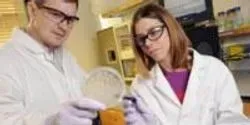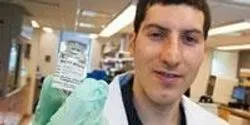Clinical Research Labs

A new class of synthetic platelet-like particles could augment natural blood clotting for the emergency treatment of traumatic injuries – and potentially offer doctors a new option for curbing surgical bleeding and addressing certain blood clotting disorders without the need for transfusions of natural platelets.

It may look like fresh blood and flow like fresh blood, but the longer blood is stored, the less it can carry oxygen into the tiny microcapillaries of the body, says a new study from University of Illinois researchers.

What if repairing large segments of damaged muscle tissue was as simple as mobilizing the body’s stem cells to the site of the injury? New research in mice and rats, conducted at Wake Forest Baptist Medical Center’s Institute for Regenerative Medicine, suggests that “in body” regeneration of muscle tissue might be possible by harnessing the body’s natural healing powers.

In a new study that could ultimately lead to many new medicines, scientists from the Florida campus of The Scripps Research Institute (TSRI) have adapted a chemical approach to turn diseased cells into unique manufacturing sites for molecules that can treat a form of muscular dystrophy.

One of the major benefits of working in the sciences is the ability to have a positive impact on the world through research or the development of new products. That’s certainly the case with working at Redbiotec AG, a biotechnology company located at the Bio-Technopark in Schlieren, near Zürich, Switzerland.

Even the most careful chosen meal can contain surprises. To defend against infectious microbes, viruses or other potential hazards that find their way to the intestines, a dedicated contingent of immune cells keeps watch within the thin layer of tissue that divides the contents of the gut from the body itself.

Although HIV can now be effectively suppressed using anti-retroviral drugs, it still comes surging back the moment the flow of drugs is stopped. Latent reservoirs of HIV-infected cells, invisible to the body’s immune system and unreachable by pharmaceuticals, ensure that the infection will rebound after therapy is terminated.











